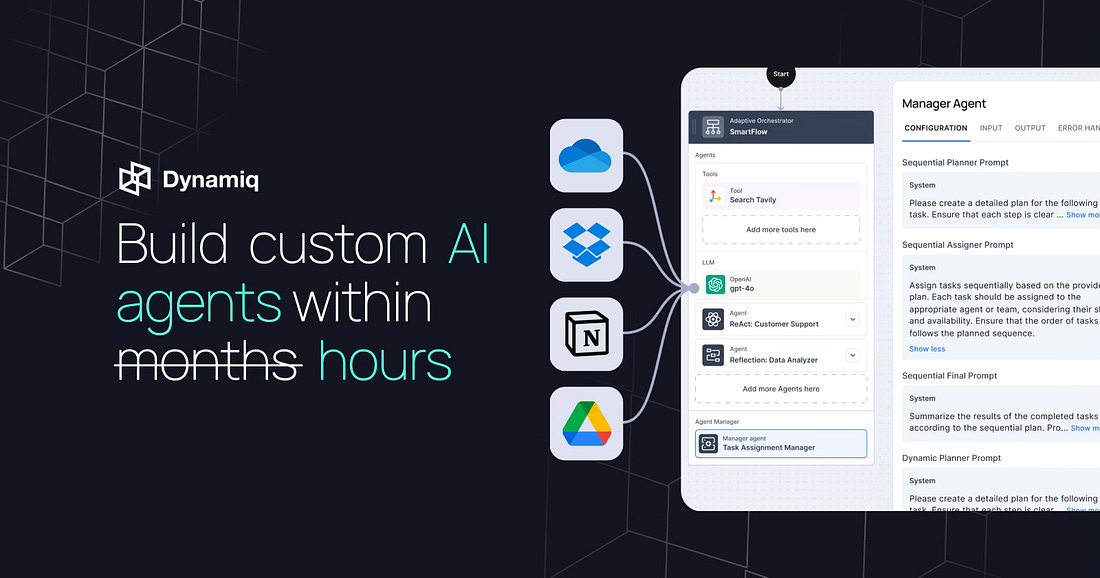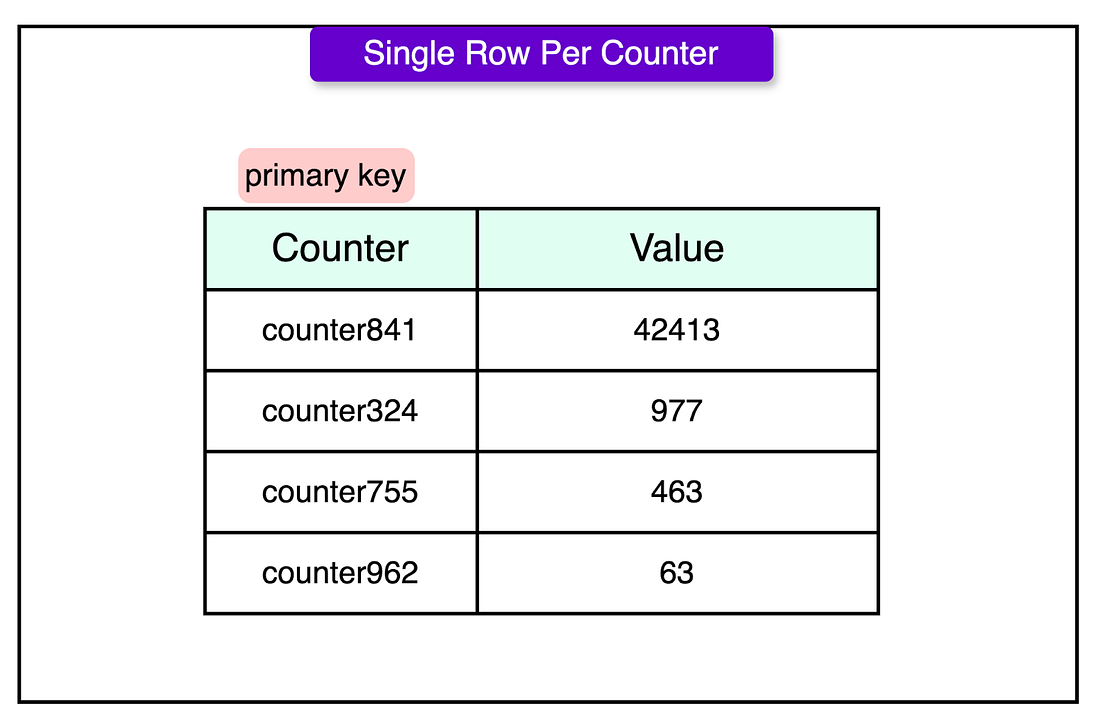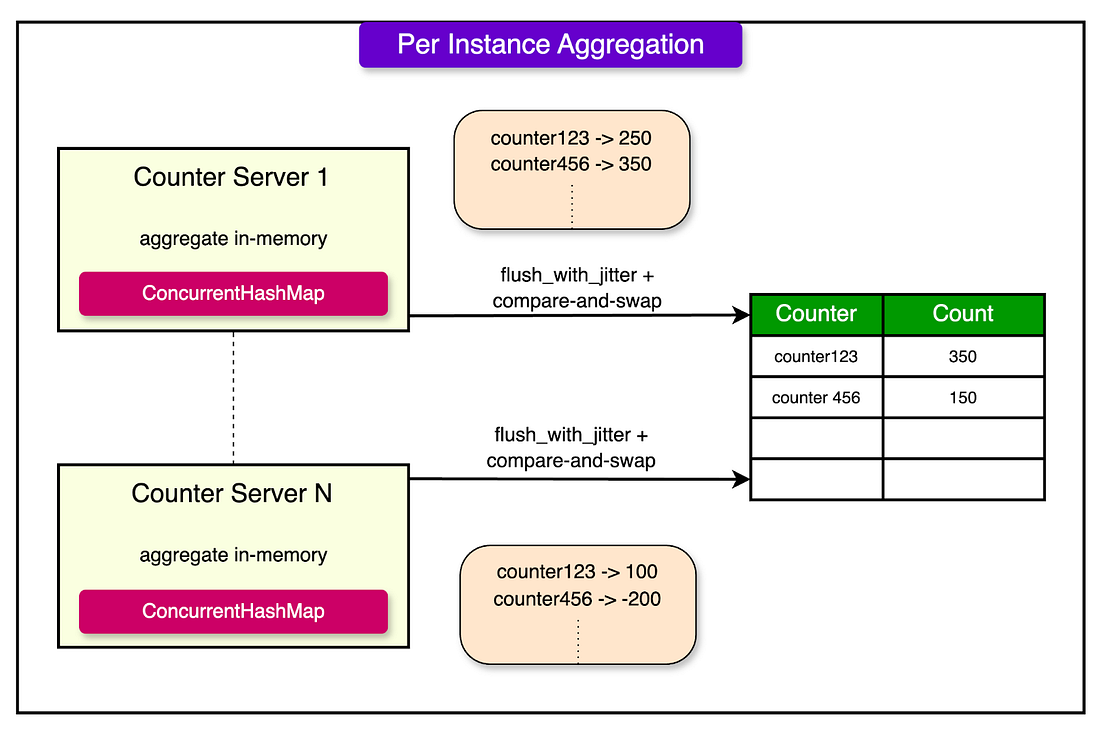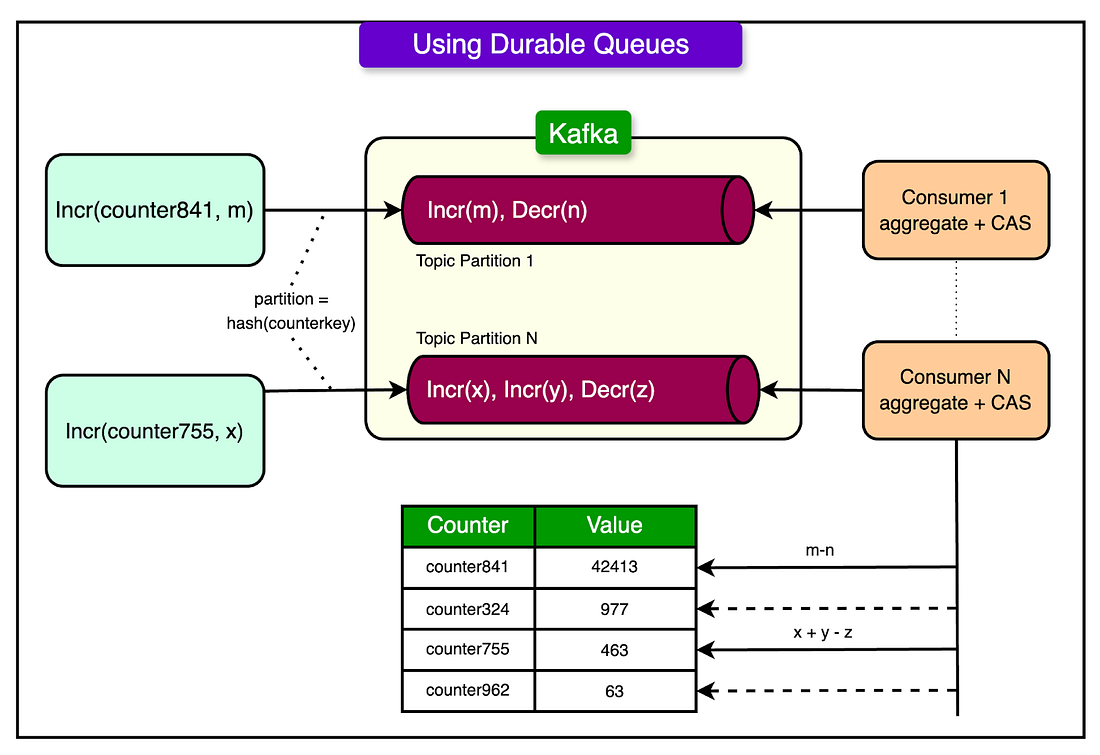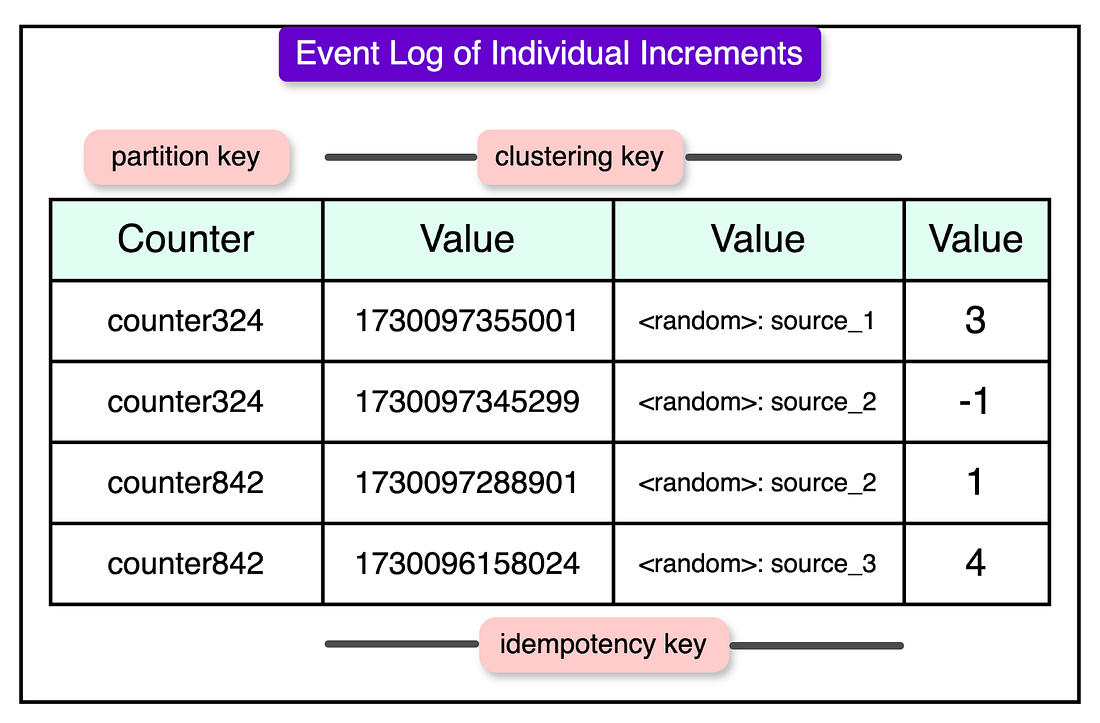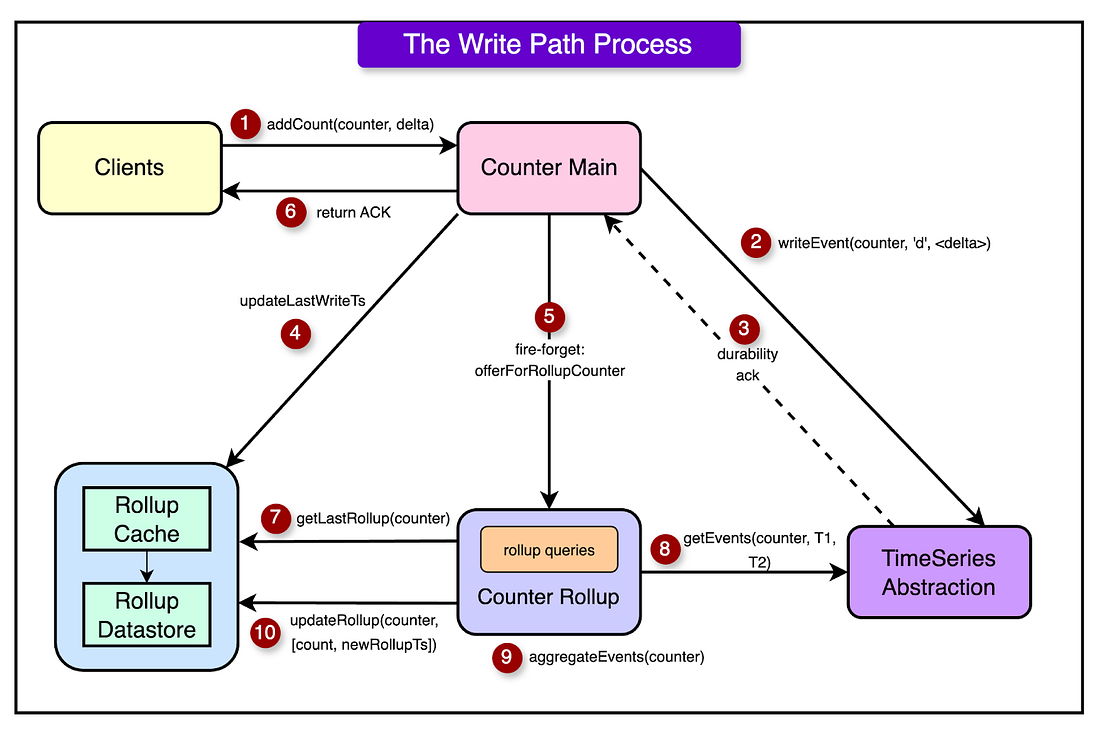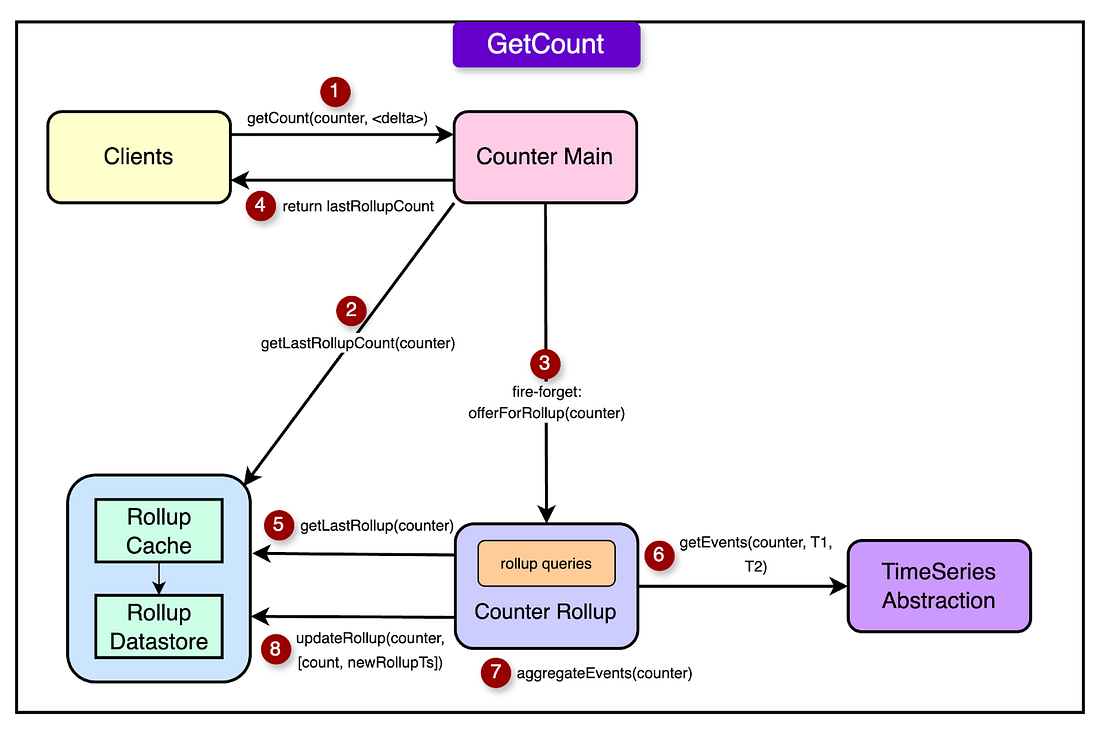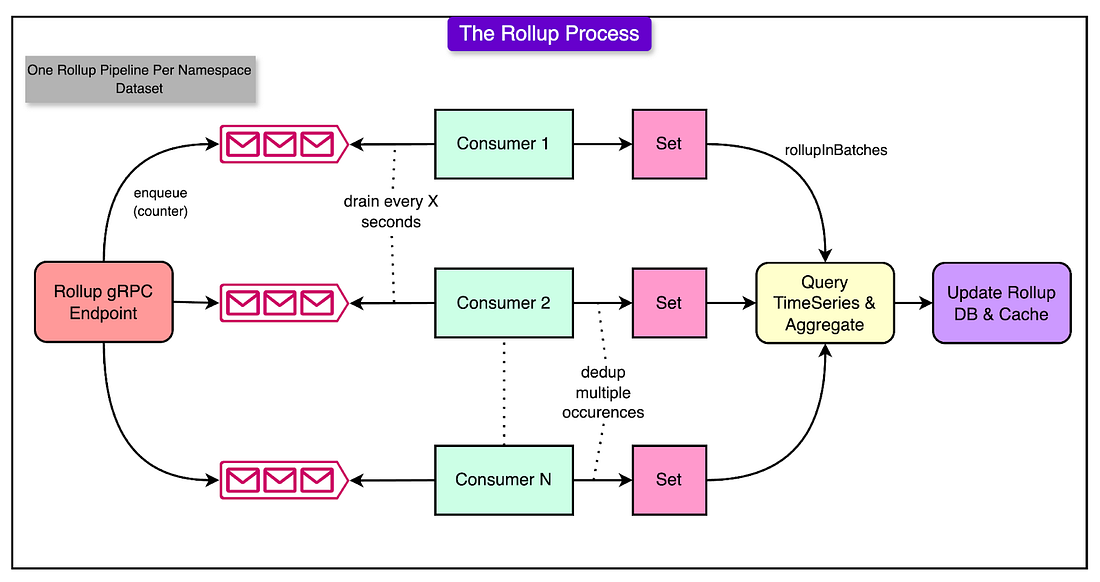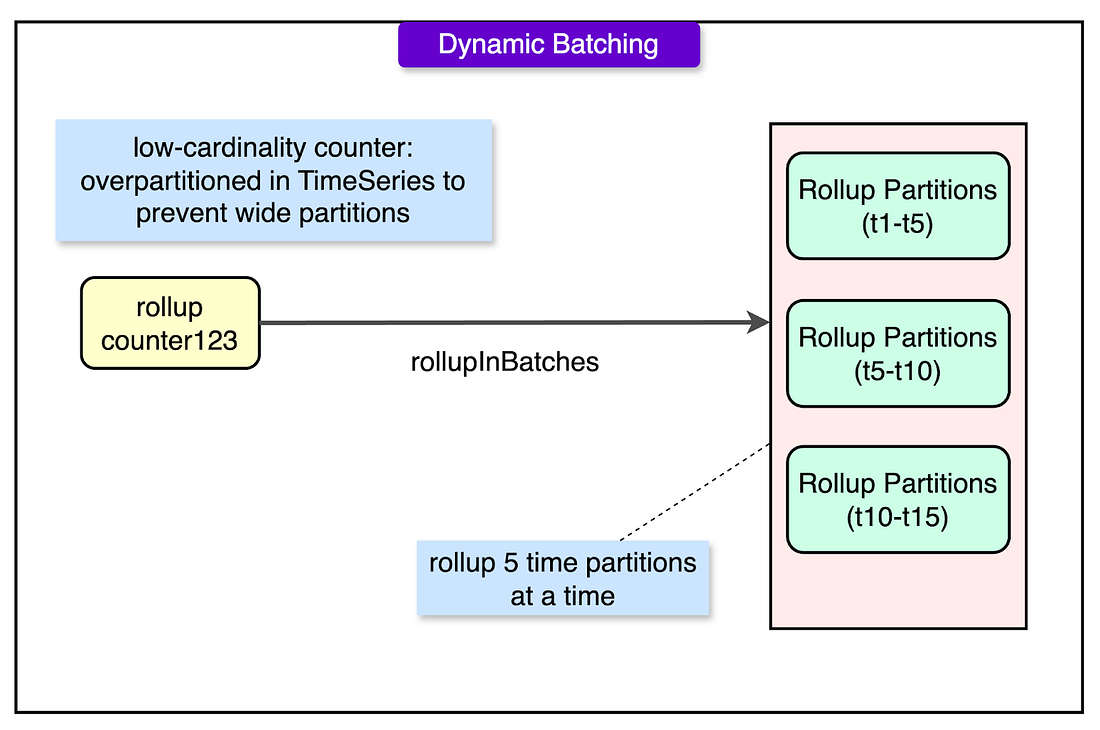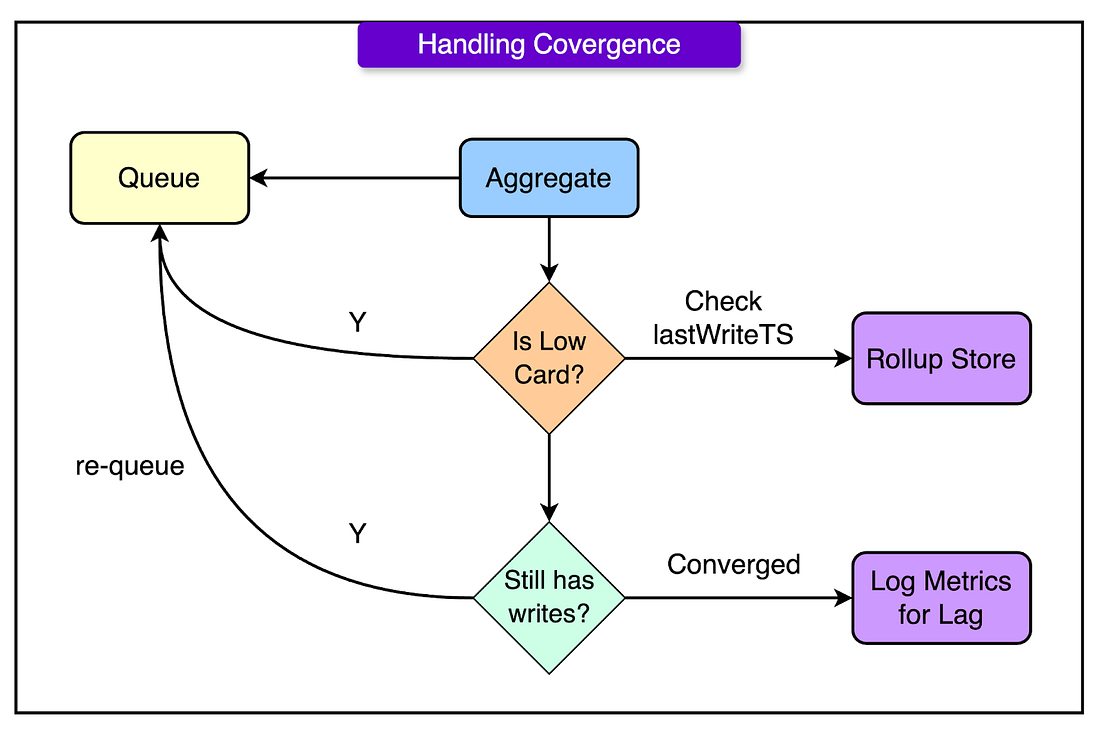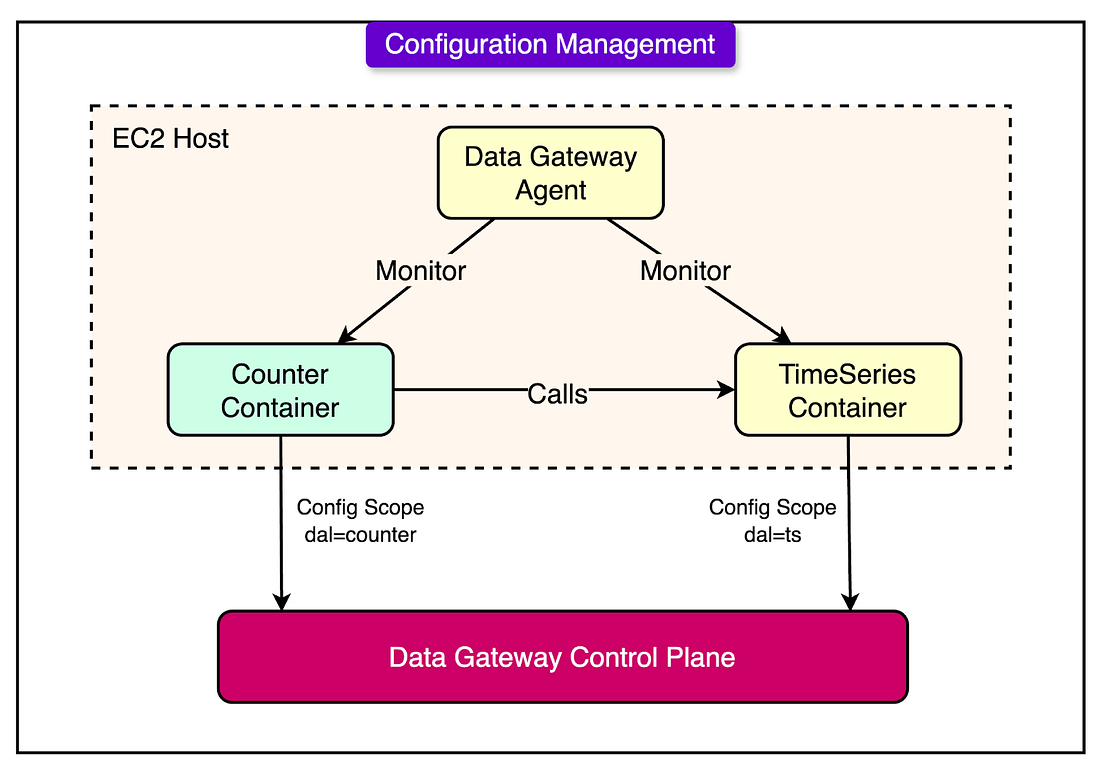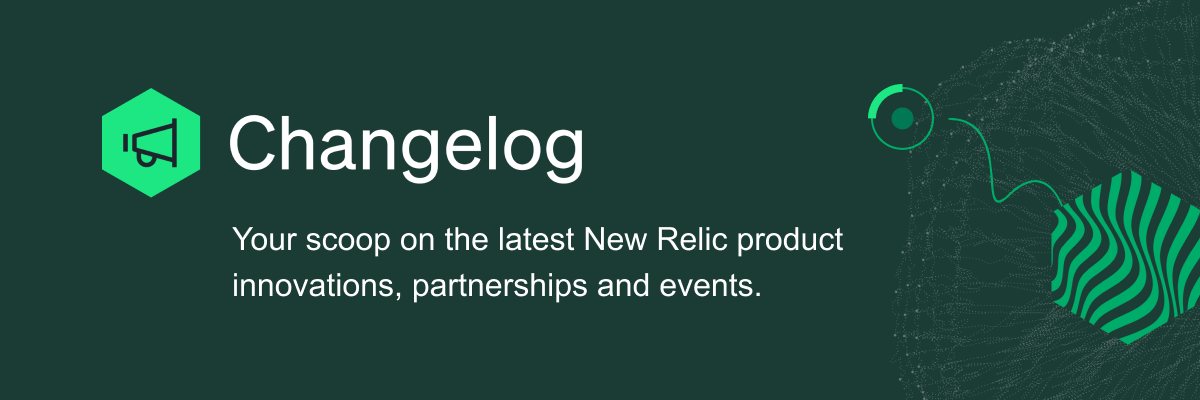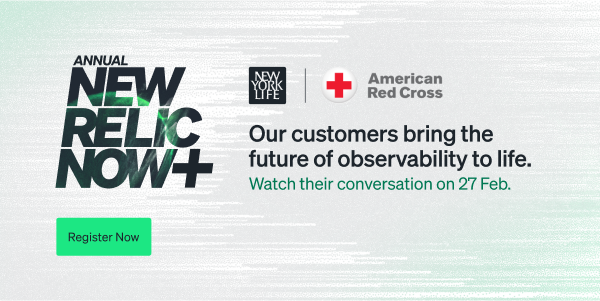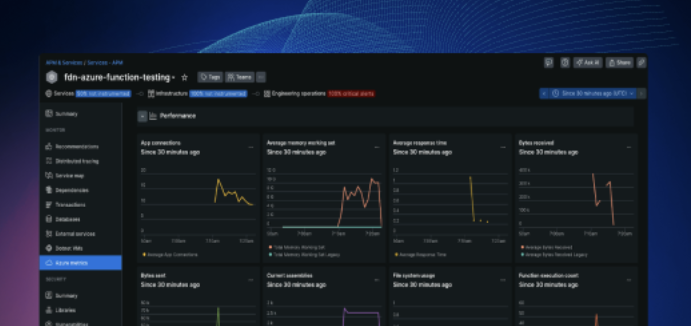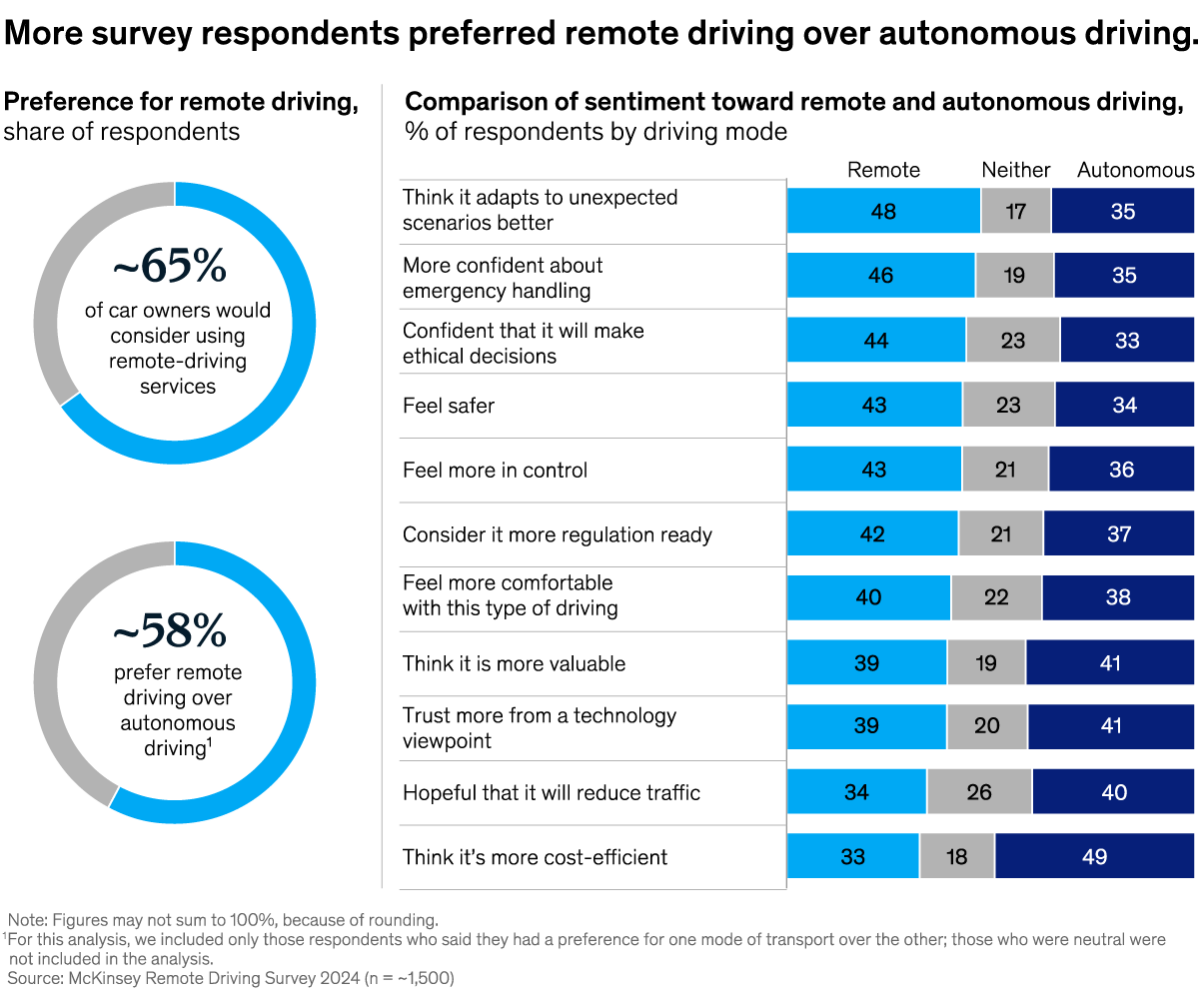Archives
- By thread 4552
-
By date
- June 2021 10
- July 2021 6
- August 2021 20
- September 2021 21
- October 2021 48
- November 2021 40
- December 2021 23
- January 2022 46
- February 2022 80
- March 2022 109
- April 2022 100
- May 2022 97
- June 2022 105
- July 2022 82
- August 2022 95
- September 2022 103
- October 2022 117
- November 2022 115
- December 2022 102
- January 2023 88
- February 2023 90
- March 2023 116
- April 2023 97
- May 2023 159
- June 2023 145
- July 2023 120
- August 2023 90
- September 2023 102
- October 2023 106
- November 2023 100
- December 2023 74
- January 2024 75
- February 2024 75
- March 2024 78
- April 2024 74
- May 2024 108
- June 2024 98
- July 2024 116
- August 2024 134
- September 2024 130
- October 2024 141
- November 2024 171
- December 2024 115
- January 2025 216
- February 2025 140
- March 2025 220
- April 2025 126
-
Superagency: The transformative potential of AI
Test your knowledge
by "McKinsey & Company" <publishing@email.mckinsey.com> - 02:17 - 12 Feb 2025 -
How to build your leadership muscle
On McKinsey Perspectives
Winning leadership practices Brought to you by Alex Panas, global leader of industries, & Axel Karlsson, global leader of functional practices and growth platforms
Welcome to the latest edition of Only McKinsey Perspectives. We hope you find our insights useful. Let us know what you think at Alex_Panas@McKinsey.com and Axel_Karlsson@McKinsey.com.
—Alex and Axel
•
CEO as athlete. Elite athletes and modern CEOs have a lot in common, according to Bob Sternfels, McKinsey’s global managing partner, and Daniel Pacthod, senior partner. Just as modern sports stars are stronger, better coached, and better prepared than those of the past, today’s best leaders have made profound shifts in their thinking about and approach to the job. Indeed, McKinsey research has identified several traits that are required to lead in the 21st century: for example, positive energy, a sense of service, and a belief in continuous learning.
—Edited by Belinda Yu, editor, Atlanta
This email contains information about McKinsey's research, insights, services, or events. By opening our emails or clicking on links, you agree to our use of cookies and web tracking technology. For more information on how we use and protect your information, please review our privacy policy.
You received this email because you subscribed to the Only McKinsey Perspectives newsletter, formerly known as Only McKinsey.
Copyright © 2025 | McKinsey & Company, 3 World Trade Center, 175 Greenwich Street, New York, NY 10007
by "Only McKinsey Perspectives" <publishing@email.mckinsey.com> - 01:09 - 12 Feb 2025 -
Drawing Parallels Between Super Bowl LIX and ERP Systems
Drawing Parallels Between Super Bowl LIX and ERP Systems
Hi MD Abul,
As the excitement of Super Bowl LIX settles, where the Philadelphia Eagles triumphed over the Kansas City Chiefs with a score of 40-22, it's a great time to reflect on the parallels between the NFL's top teams and leading ERP systems.
In our blog post, "If ERP Systems Were NFL Teams!", we draw creative analogies between various ERP solutions and NFL franchises. For instance, we compare the Dallas Cowboys to Oracle, highlighting their long-standing success and expansive fan base. Similarly, the New England Patriots are likened to NetSuite, emphasizing their rise to prominence and sustained excellence.
These comparisons offer a unique perspective on how different ERP systems align with the characteristics of NFL teams, providing insights that can guide your organization's digital transformation journey.
To explore these analogies further and see which ERP system aligns with your organization's goals, read the full article here.Best regards,
Eric Kimberling
Third Stage Consulting 384 Inverness Pkwy Suite Englewood Colorado
You received this email because you are subscribed to Marketing Information from Third Stage Consulting.
Update your email preferences to choose the types of emails you receive.
Unsubscribe from all future emails
by "Eric Kimberling" <eric.kimberling@thirdstage-consulting.com> - 05:03 - 11 Feb 2025 -
How Netflix Built a Distributed Counter for Billions of User Interactions
How Netflix Built a Distributed Counter for Billions of User Interactions
Imagine trying to count millions of events happening worldwide simultaneously while ensuring the results are fast, accurate, and cost-effective.͏ ͏ ͏ ͏ ͏ ͏ ͏ ͏ ͏ ͏ ͏ ͏ ͏ ͏ ͏ ͏ ͏ ͏ ͏ ͏ ͏ ͏ ͏ ͏ ͏ ͏ ͏ ͏ ͏ ͏ ͏ ͏ ͏ ͏ ͏ ͏ ͏ ͏ ͏ ͏ ͏ ͏ ͏ ͏ ͏ ͏ ͏ ͏ ͏ ͏ ͏ ͏ ͏ ͏ ͏ ͏ ͏ ͏ ͏ ͏ ͏ ͏ ͏ ͏ ͏ ͏ ͏ ͏ ͏ ͏ ͏ ͏ ͏ ͏ ͏ ͏ ͏ ͏ ͏ ͏ ͏ ͏ ͏ ͏ ͏ ͏ ͏ ͏ ͏ ͏ ͏ ͏ ͏ ͏ ͏ ͏ ͏ ͏ ͏ ͏ ͏ ͏ ͏ ͏ ͏ ͏ ͏ ͏ ͏ ͏ ͏ ͏ ͏ ͏ ͏ ͏ ͏ ͏ ͏ ͏ ͏ ͏ ͏ ͏ ͏ ͏ ͏ ͏ ͏ ͏ ͏ ͏ ͏ ͏ ͏ ͏ ͏ ͏ ͏ ͏ ͏ ͏ ͏ ͏ ͏ ͏ ͏ ͏ ͏ ͏ ͏ ͏ ͏ ͏ ͏ ͏ ͏ ͏ ͏ ͏ ͏ ͏ ͏ ͏ ͏ ͏ ͏ ͏ ͏ ͏ ͏ ͏ ͏ ͏ ͏ ͏ ͏ ͏ ͏ ͏ ͏ ͏ ͏ ͏ ͏ ͏ ͏ ͏ ͏ ͏ ͏ ͏ ͏ ͏ ͏ ͏ ͏ ͏ ͏ ͏ Forwarded this email? Subscribe here for moreBuild AI Agents with Dynamiq in Just Hours (Sponsored)
Break free from traditional no-code tool constraints and build multi-agents with a fully customizable low-code interface.
Free plan lets you design, test, and deploy multi-agent systems at zero cost (no credit card required).
Start instantly with pre-built agent templates, and extend functionality using our open-source Python package.
Built-in Knowledge Bases with an integrated workflow automatically split, embed, and store documents in a vector database - fully customizable, like everything else.
Switch between LLMs in just a few clicks and deploy anywhere - on-prem, cloud, or hybrid setups.
Whether you’re working with top LLMs or building advanced workflows, we’ve got you covered.
Disclaimer: The details in this post have been derived from the Netflix Tech Blog. All credit for the technical details goes to the Netflix engineering team. The links to the original articles are present in the references section at the end of the post. We’ve attempted to analyze the details and provide our input about them. If you find any inaccuracies or omissions, please leave a comment, and we will do our best to fix them.
Netflix operates at an incredible scale, with millions of users interacting with its platform every second.
To provide a great user experience, Netflix needs to track and measure these interactions—for example, counting how many users are watching a new show or clicking on specific features. These numbers help Netflix make real-time decisions about improving user experience, optimizing its infrastructure, and running experiments like A/B tests.
However, counting at such a massive scale is not straightforward. Imagine trying to count millions of events happening worldwide simultaneously while ensuring the results are fast, accurate, and cost-effective.
That’s where the Distributed Counter Abstraction comes in.
This system is designed to handle counting in a way that meets Netflix's demanding requirements:
Low Latency: Counts need to be updated and available within milliseconds.
High Throughput: The system must handle thousands of updates per second without bottlenecks.
Cost Efficiency: Managing such a large-scale system shouldn’t break the bank.
In this article, we’ll look at how Netflix built a Distributed Counter Abstraction and the challenges they faced.
Why the Need for a Distributed Counter?
Netflix needs to count millions of events every second across its global platform. These events could be anything: the number of times a feature is used, how often a show is clicked, or even detailed metrics from experiments like A/B testing
The challenge is that these counting needs aren’t one-size-fits-all.
Some situations require quick, approximate results, while others need precise and durable counts. This is where Netflix’s Distributed Counter Abstraction shines, offering flexibility to address these diverse needs.
There are two broad categories of counting:
Best-Effort Counting: This type of counting is used when speed is more important than accuracy. The counts don’t need to be perfectly precise, and they aren’t stored for a long time. It works well for scenarios like A/B testing, where approximate counts are enough to compare the performance of two groups.
Eventually Consistent Counting: This type is used when accuracy and durability are critical. Although it may take a little longer to get the final count, it ensures the results are correct and preserved. This is ideal for metrics that must be recorded precisely over time, such as billing, regulatory compliance, or critical usage reports.
We will look at both categories in more detail in a later section.
However, both categories share some key requirements that are as follows:
High Availability: The system must always be up and running, even during failures or high demand. Netflix cannot afford downtime in counting since these metrics often drive critical decisions.
High Throughput: The system must handle millions of counting operations per second. This means it needs to efficiently process a huge volume of incoming data without bottlenecks.
Scalability: Netflix operates globally, so the counting system must scale horizontally across multiple regions and handle spikes in usage like during the release of a new show.
The table below shows these requirements in more detail:
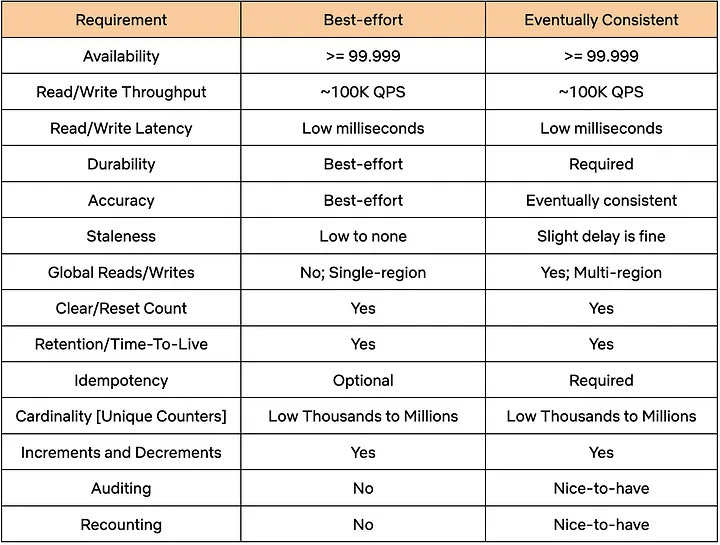
Source: Netflix Tech Blog The Counter Abstraction API Design
The Distributed Counter abstraction was designed as a highly configurable and user-friendly system.
The abstraction provides an API that is simple yet powerful, enabling clients to interact with counters consistently. The main API operations are as follows:
1 - Add Count/AddAndGetCount
The purpose of this endpoint is to increment or decrement a counter by a specified value.
The client specifies the namespace (for example, “user_metrics”), the counter name (for example, “views_counter”), and the delta (a positive or negative value to adjust the count). The API returns the updated count immediately after applying the delta.
See the example below:
{ "namespace": "user_metrics", "counter_name": "views_counter", "delta": 5, "idempotency_token": { "token": "unique_event_id", "generation_time": "2025-01-28T14:48:00Z" } }Here, the idempotency token ensures that repeated requests (due to retries) do not result in double-counting.
2 - GetCount
This endpoint helps to retrieve the current value of a counter.
The client specifies the namespace and counter name, and the system fetches the value. Here’s an example API request:
{ "namespace": "user_metrics", "counter_name": "views_counter" }This operation is optimized for speed, returning slightly stale counts in some configurations to maintain performance.
3 - ClearCount
This endpoint helps reset a counter’s value to zero.
Similar to other requests, the client provides the namespace and counter name. This operation also supports idempotency tokens to ensure safe retries.
Counting Techniques
The Distributed Counter abstraction supports several types of counters to meet Netflix's diverse counting requirements. Each approach balances trade-offs between speed, accuracy, durability, and infrastructure cost.
Here’s a detailed breakdown of the main counting strategies:
Best-Effort Regional Counter
This is a lightweight counting approach optimized for speed and low infrastructure cost. It provides quick but approximate counts.
It is built on EVCache, Netflix’s distributed caching solution based on Memcached. Counts are stored as key-value pairs in a cache with minimal latency and high throughput. TTL (Time-To-Live) ensures counters don’t occupy the cache indefinitely.
The best-effort counter is ideal for short-lived experiments like A/B testing where precise counts aren’t critical. The advantages of this type of counter are as follows:
Extremely fast with millisecond-level latency.
Cost-effective due to shared multi-tenant clusters.
However, there are also disadvantages to this approach:
No cross-region replication for counters.
Lacks idempotency, making retries unsafe.
Cannot guarantee consistency across nodes.
Eventually Consistent Global Counter
For scenarios where accuracy and durability are crucial, there are several approaches available under the eventually consistent model. These ensure that counters converge to accurate values over time, though some delays are acceptable.
1 - Single Row Per Counter
It’s a straightforward approach where each counter is represented by a single row in a globally replicated datastore.
See the table below for example:
Despite its simplicity, this approach has some disadvantages such as:
Vulnerable to data loss if an instance fails before flushing its counts.
Difficult to synchronize counter resets across instances.
Lacks idempotency, thereby complicating retries.
2 - Per Instance Aggregation
This approach aggregates counts in memory on individual instances, then periodically writes the aggregated values to a durable store. This process is known as flushing. Introducing sufficient jitter to the flush process helps reduce contention.
See the diagram below for reference:
The main advantage of this approach is that it reduces contention by limiting updates to the durable store. However, it also poses some challenges such as:
Vulnerable to data loss if an instance fails before flushing its counts.
Difficult to synchronize counter resets across instances.
Lacks idempotency.
3 - Durable Queues
This approach logs counter events to a durable queuing system like Apache Kafka. Events are processed in batches for aggregation. Here’s how it works:
Counter events are written to specific Kafka partitions based on a hash of the counter key.
Consumers read from partitions, aggregate events, and store the results in a durable store.
See the diagram below:
This approach is reliable and fault tolerant due to durable logs. Also, idempotency is easier to implement, preventing overcounting during retries.
However, it can cause potential delays if consumers fall behind. Rebalancing partitions as counters or throughput increases can be complex.
4 - Event Log of Increments
This approach logs every individual increment (or decrement) as an event with metadata such as event time and event_id. The event_id can include the source information of where the operation originated.
See the diagram below:
The combination of event_time and event_id can also serve as the idempotency key for the write.
However, this approach also has several drawbacks:
High storage cost due to the need to retain every increment.
Degraded read performance as it requires scanning all events for a counter.
Wide partitions in databases like Cassandra can slow down queries.
Netflix’s Hybrid Approach
Netflix’s counting needs are vast and diverse, requiring a solution that balances speed, accuracy, durability, and scalability.
To meet these demands, Netflix developed a hybrid approach that combines the strengths of various counting techniques we’ve discussed so far. This approach uses event logging, background aggregation, and caching to create a system that is both scalable and efficient, while also maintaining eventual consistency.
Let’s understand the approach in more detail:
1 - Logging Events in the TimeSeries Abstraction
At the core of Netflix’s solution is its TimeSeries Abstraction, a high-performance service designed for managing temporal data.
Netflix leverages this system to log every counter event as an individual record, allowing precise tracking and scalability.
Each counter event is recorded with metadata, including:
event_time: The time the event occurred.
event_id: A unique identifier for the event to ensure idempotency.
event_item_key: Specifies the counter being updated.
Events are organized into time buckets (for example, by minute or hour) to prevent wide partitions in the database. Unique event IDs prevent duplicate counting, even if retries occur.
2 - Aggregation Processes for High Cardinality Counters
To avoid the inefficiency of fetching and recalculating counts from raw events during every read, Netflix employs a background aggregation process. This system continuously consolidates events into summarized counts, reducing storage and read overhead.
Aggregation occurs within defined time windows to ensure data consistency. An immutable window is used, meaning only finalized events (not subject to further updates) are aggregated.
The Last Rollup Timestamp tracks the last time a counter was aggregated. It ensures that the system only processes new events since the previous rollup.
Here’s how the aggregation process works:
The rollup process collects all events for a counter within the aggregation window. It summarizes the total count and updates the rollup store.
Aggregated counts are stored in a durable system like Cassandra for persistence. Future aggregations build on this checkpoint, reducing computation costs.
Rollups are triggered during writes and reads. For writes, it is triggered when a lightweight event notifies the system of changes. During reads, when a user fetches a counter, rollups are triggered if the count is stale.
See the diagram below for the write path process:
Next, we have the diagram below that shows the read or getCount process:
Aggregation reduces the need to repeatedly process raw events, improving read performance. By using immutable windows, Netflix ensures that counts are accurate within a reasonable delay.
3 - Caching for Optimized Reads
While the aggregation process ensures counts are eventually consistent, caching is used to further enhance performance for frequently accessed counters. Netflix integrates EVCache (a distributed caching solution) to store rolled-up counts.
The cache holds the last aggregated count and the corresponding last rollup timestamp. When a counter is read, the cached value is returned immediately, providing a near-real-time response. A background rollup is triggered to ensure the cache stays up to date.
Cached counts allow users to retrieve values in milliseconds, even if they are slightly stale. Also, caching minimizes direct queries to the underlying datastore, saving infrastructure costs.
Key Benefits of the Hybrid Approach
The hybrid approach has several benefits such as:
Combining Accuracy and Performance: It logs every event for precise recounting when needed. Aggregates events in the background to maintain high read performance.
Scales with High Cardinality: Handles millions of counters efficiently using time and event bucketing. This ensures an even distribution of workload across storage and processing systems.
Ensures Reliability: Uses idempotency tokens to handle retries safely. Also, it employs persistent storage (for example, Cassandra) and caches for fault tolerance.
Balances Trade-Offs: Sacrifices some immediacy for eventual consistency in global counts. It also introduces slight delays in aggregation to maintain accuracy within immutable windows.
Scaling the Rollup Pipeline
To manage millions of counters across the globe while maintaining high performance, Netflix uses a Rollup Pipeline. This is a sophisticated system that processes counter events efficiently, aggregates them in the background, and scales to handle massive workloads.
There are three main parts of this rollup pipeline:
1 - Rollup Events and Queues
When a counter is updated (via an AddCount, ClearCount, or GetCount operation), the system generates a lightweight rollup event.
This event notifies the Rollup Pipeline that the counter requires aggregation. The rollup event itself does not include the raw data but merely identifies the counter needing processing.
Here’s how rollup queues work:
Each Rollup Server instance maintains in-memory queues that receive rollup events. These queues allow parallel processing of aggregation tasks, enabling the system to handle high-throughput workloads.
A fast, non-cryptographic hash function (for example, XXHash) ensures that related counters are consistently routed to the same queue. This minimizes duplicate work and improves efficiency.
Multiple events for the same counter are consolidated into a Set, so each counter is rolled up only once within a rollup window.
Netflix opted for in-memory rollup queues to simplify provisioning and reduce costs. This design is easier to implement compared to a fully durable queuing system.
However, there are some potential risks as well.
If a rollup server crashes before processing all events, those events are lost. This is mitigated for frequently accessed counters, as subsequent operations trigger new rollups.
During deployments or scaling, there may be brief overlaps where both old and new servers are active. However, this is managed safely because aggregations occur within immutable windows.
When workloads increase, Netflix scales the Rollup Pipeline by increasing the number of rollup queues and redeploying the rollup servers with updated configurations.
The process is seamless with old servers gracefully shutting down after draining their events. During deployments, both old and new Rollup Servers may briefly handle the same counters. This avoids downtime but introduces slight variability in counts, which is eventually resolved as counts converge.
2 - Dynamic Batching and Back-Pressure
To optimize performance, the Rollup Pipeline processes counters in batches rather than individually.
The size of each batch adjusts dynamically based on system load and counter cardinality. This prevents the system from overwhelming the underlying data store (for example, Cassandra). Within a batch, the pipeline queries the TimeSeries Abstraction in parallel to aggregate events for multiple counters simultaneously.
See the diagram below:
The system monitors the performance of each batch and uses this information to control the processing rate. After processing one batch, the pipeline pauses before starting the next, based on how quickly the previous batch is completed. This adaptive mechanism ensures the system doesn’t overload the storage backend during high traffic.
3 - Handling Convergence for Low and High Cardinality Counters
Low cardinality counters are frequently accessed but have fewer unique instances. The pipeline keeps them in continuous rollup circulation to ensure they remain up to date.
On the other hand, high-cardinality counters have many unique instances (such as per-user metrics) and may not be accessed frequently. To avoid excessive memory usage, the pipeline uses the last-write-timestamp to determine when a counter needs to be re-queued. This ensures aggregation continues until all updates are processed.
See the diagram below:
Centralized Configuration of the Control Plane
At the heart of Netflix’s Distributed Counter Abstraction is its control plane, a centralized system that manages configuration, deployment, and operational complexity across the abstraction layers.
See the diagram below:
The control plane allows Netflix to fine-tune every aspect of the counting service, ensuring it meets the needs of diverse use cases without requiring manual intervention or re-engineering.
1 - Role of the Control Plane
The Control Plane serves as a management hub for all configurations related to the Distributed Counter Abstraction. It is responsible for:
Configuring the persistence mechanisms for counters.
Adjusting settings for specific use cases, such as high or low-cardinality counters.
Implementing strategies for data retention, caching, and durability.
This centralized management ensures that teams across Netflix can focus on their use cases without worrying about the underlying complexities of distributed counting.
2 - Configuring Persistent Mechanisms
The Control Plane enables the configuration of persistence layers for storing counter data.
Netflix uses a combination of EVCache (for caching) and Cassandra (for durable storage). The control plane coordinates their interaction.
EVCache is used for fast, low-latency access to counters. The control plane specifies parameters such as cache size and expiration policies.
{ "id": "CACHE", "physical_storage": { "type": "EVCACHE", "cluster": "evcache_dgw_counter_tier1" } }Cassandra is used as the primary datastore for durable, long-term storage of counters and their rollups.
The configurable parameters for this include:
Keyspace settings, such as the number of partitions.
Time partitioning for counters (for example, breaking data into manageable time buckets).
Retention policies to prevent excessive storage use.
See the example configuration below:
{ "id": "COUNTER_ROLLUP", "physical_storage": { "type": "CASSANDRA", "cluster": "cass_dgw_counter_uc1", "dataset": "my_dataset" } }3 - Supporting Different Cardinality Strategies
Counters can vary greatly in cardinality i.e. the number of unique counters being managed.
Low-cardinality counters are global metrics like “total views” for a show. Such counters are frequently accessed and require continuous rollup processing. This requires smaller time buckets for aggregation and shorter TTLs for cached values to ensure freshness.
High-cardinality counters include per-user metrics like “views per user”. These counters are less frequently accessed but require efficient handling of a large number of unique keys. They involve larger time buckets to reduce database overhead and efficient partitioning to distribute load across storage nodes.
4 - Retention and Lifecycle Policies
Retention policies ensure that counter data does not grow uncontrollably, reducing costs while maintaining historical relevance.
For example, raw counter events are stored temporarily (such as 7 days) before being deleted or archived. Aggregated rollups are retained longer, as they occupy less space and are useful for long-term metrics.
Also, the control plane ensures counters expire after their intended lifespan, preventing them from consuming unnecessary resources.
5 - Multi-Tenant Support
Netflix’s Control Plane is designed to support a multi-tenant environment where different teams or applications can operate their counters independently:
Each namespace is isolated, allowing configurations to vary based on the use case.
For example, the user_metrics namespace may prioritize low-latency caching for real-time dashboards. Also, the billing_metrics namespace may focus on durability and accuracy for financial reporting.
Conclusion
Distributed counting is a complex problem, but Netflix’s approach demonstrates how thoughtful design and engineering can overcome these challenges.
By combining powerful abstractions like the TimeSeries and Data Gateway Control Plane with innovative techniques like rollup pipelines and dynamic batching, Netflix delivers a counting system that is fast, reliable, and cost-effective.
The system processes 75,000 counter requests per second globally while maintaining single-digit millisecond latency for API endpoints. This incredible performance is achieved through careful design choices, including dynamic batching, caching with EVCache, and efficient aggregation processes.
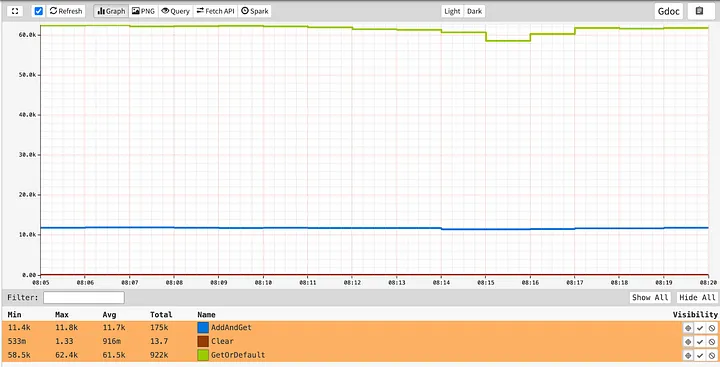
Source: Netflix Tech Blog The principles behind Netflix’s Distributed Counter Abstraction extend well beyond their platform. Any large-scale system requiring real-time metrics, distributed event tracking, or global consistency can benefit from a similar architecture
References:
SPONSOR US
Get your product in front of more than 1,000,000 tech professionals.
Our newsletter puts your products and services directly in front of an audience that matters - hundreds of thousands of engineering leaders and senior engineers - who have influence over significant tech decisions and big purchases.
Space Fills Up Fast - Reserve Today
Ad spots typically sell out about 4 weeks in advance. To ensure your ad reaches this influential audience, reserve your space now by emailing sponsorship@bytebytego.com.
Like
Comment
Restack
© 2025 ByteByteGo
548 Market Street PMB 72296, San Francisco, CA 94104
Unsubscribe
by "ByteByteGo" <bytebytego@substack.com> - 11:36 - 11 Feb 2025 -
Join us for the most transformative platform update yet
Hi MDI’m thrilled to invite you to New Relic Now+, where Intelligent Observability breaks new ground on 27th February (9am GMT / 10am CET).
At this free virtual event, we’re unveiling New Relic’s most transformative platform update yet, designed to go far beyond system health and uptime to power real-time business impact and leverage intelligence to accelerate developer velocity.
Here’s what’s in store:
- Learn how agentic AI proactively predicts and prevents issues while unlocking powerful recommendations.
-
Hear from industry leaders about driving measurable business outcomes with Intelligent Observability.
-
Take part in hands-on workshops that give you critical new skills you can apply today.
-
Be first to see 15+ new product innovations and live demos.
Let me know if you’d like to discuss how these innovations can work for your organization ahead of the event—I’d be happy to chat.
We’d love to see you there,ThomasThomasConsultantNew RelicIf you don't want to hear from me again, please let me know.
by "Thomas Sampassa-Ilunga" <tilunga@newrelic.com> - 09:14 - 11 Feb 2025-
Re: Join us for the most transformative platform update yet
Hi MD,Just bumping this up in what I'm sure is a very busy inbox. Are you available for a discussion prior to the event?Thanks,ThomasConsultantNew Relic
If you don't want to hear from me again, please let me know.On Feb 11, 2025 9:14 AM, "Thomas Sampassa-Ilunga" <tilunga@newrelic.com> wrote:
Hi MDI’m thrilled to invite you to New Relic Now+, where Intelligent Observability breaks new ground on 27th February (9am GMT / 10am CET).
At this free virtual event, we’re unveiling New Relic’s most transformative platform update yet, designed to go far beyond system health and uptime to power real-time business impact and leverage intelligence to accelerate developer velocity.
Here’s what’s in store:
- Learn how agentic AI proactively predicts and prevents issues while unlocking powerful recommendations.
-
Hear from industry leaders about driving measurable business outcomes with Intelligent Observability.
-
Take part in hands-on workshops that give you critical new skills you can apply today.
-
Be first to see 15+ new product innovations and live demos.
Let me know if you’d like to discuss how these innovations can work for your organization ahead of the event—I’d be happy to chat.
We’d love to see you there,ThomasThomasConsultantNew Relic
If you don't want to hear from me again, please let me know.
by "Thomas Sampassa-Ilunga" <tilunga@newrelic.com> - 04:56 - 13 Feb 2025
-
Discover the keys to OpenTelemetry success
OTel and monitoring
Dive into our expert resources to elevate and perfect your API approach
Hi Md Abul,
Interested in building a strong observability strategy that enhances visibility and performance across your systems?
Dive into our collection of expert blogs filled with valuable insights, tips, and best practices on using OpenTelemetry to improve monitoring and gain deeper visibility across your infrastructure.
To make the most of our tools and resources, customize your content preferences in our preferences center.
This way, you’ll stay in the loop with the most relevant updates and insights tailored just for you.Tyk, Huckletree 199 Bishopsgate, Broadgate, London, City of London EC2M 3TY, United Kingdom, +44 (0)20 3409 1911
by "Budha from Tyk" <budha@tyk.io> - 06:00 - 11 Feb 2025 -
New Relic extends its AI monitoring to support DeepSeek
New Relic
Keep a real-time eye on your DeepSeek models with New Relic AI monitoring.
 January 2024
January 2024
New Relic Now: 27 February 9am GMT / 10am CETSave your seat here 
New Relic first to support monitoring for DeepSeek powered applications New Relic AI monitoring now supports DeepSeek and DeepSeek on Azure AI Foundry. Get broad AI stack visibility for DeepSeek apps with a simplified setup and optimize for performance, quality, and cost.
Learn more 
Faster troubleshooting with deep insights into Azure serverless functions New Relic's enhanced serverless monitoring now delivers comprehensive support for Azure Functions, including exclusive support for both dedicated and consumption hosting plans. Get a unified view of all your Azure Functions, regardless of deployment method, and gain deep insights into their performance and behavior to troubleshoot issues faster and optimize resource utilization.
Learn more 
 New Relic Now 2025Join us virtually on 27 February (9am GMT / 10am CET) and be the first to learn about our 15+ new products designed to improve your business uptime and engineering excellence, all while managing your data pipeline.Save your spot here.New Relic Now Live
New Relic Now 2025Join us virtually on 27 February (9am GMT / 10am CET) and be the first to learn about our 15+ new products designed to improve your business uptime and engineering excellence, all while managing your data pipeline.Save your spot here.New Relic Now LiveJoin us in person to learn how top companies use Intelligent Observability to drive better business outcomes, improve digital customer experiences, optimize cloud costs and boost productivity—and then get hands-on in a GameDay workshop.
This is a free event, so sign up today to save your space. We’ll wrap up the day with food, drinks, and fun:
Join us at Devworld 2025 at Rai AmsterdamVisit us at booth B4 on 27–28 February for exclusive demos, the fun Reli-Bird game with exciting prizes, and a chance to connect with our experts during our happy hour from 5–6 PM on 27 February.Don’t miss Harry Kimpel’s must-see talk, “Tracing Event-Based Systems with OpenTelemetry,” on 28 February.We can’t wait to meet you at Devworld 2025!New Relic University online workshopsCatch our recent New Relic workshops on-demand. These trainer-led workshops with hands-on labs will help you up-level your observability skills.
Watch now Get insights faster with the new data explorerWe've integrated our point-and-click data explorer into our new query experience, making it easier to understand your metrics, events, and logs—without having to manually write New Relic Query Language (NRQL) queries.
Get insights faster with the new data explorerWe've integrated our point-and-click data explorer into our new query experience, making it easier to understand your metrics, events, and logs—without having to manually write New Relic Query Language (NRQL) queries.
Read the blog
 Azure Machine LearningEnsure optimal performance for your ML models and AI projects. The Azure Machine Learning quickstart integration gives you a pre-built dashboard to help track key metrics about job executions, workspace CPU and GPU utilization, deployments, and more.
Azure Machine LearningEnsure optimal performance for your ML models and AI projects. The Azure Machine Learning quickstart integration gives you a pre-built dashboard to help track key metrics about job executions, workspace CPU and GPU utilization, deployments, and more.
Install and learn more. Keeping New Relic agents up to date
Keeping New Relic agents up to dateAgent updates may include security improvements, QoL enhancements, bug fixes, and awesome new features. Updating your agent at least once every 90 days helps ensure you have access to the latest fixes and changes.
Find out how to update your agents here
Not an existing New Relic user? Sign up for a free account to get started!

Need help? Let's get in touch.



This email is sent from an account used for sending messages only. Please do not reply to this email to contact us—we will not get your response.
This email was sent to info@learn.odoo.com Update your email preferences.
For information about our privacy practices, see our Privacy Policy.
Need to contact New Relic? You can chat or call us at +44 20 3859 9190.
Strand Bridge House, 138-142 Strand, London WC2R 1HH
© 2025 New Relic, Inc. All rights reserved. New Relic logo are trademarks of New Relic, Inc
by "New Relic" <emeamarketing@newrelic.com> - 05:12 - 11 Feb 2025 -
Empowering employees with AI
On McKinsey Perspectives
A ‘superagency’ state of mind Brought to you by Alex Panas, global leader of industries, & Axel Karlsson, global leader of functional practices and growth platforms
Welcome to the latest edition of Only McKinsey Perspectives. We hope you find our insights useful. Let us know what you think at Alex_Panas@McKinsey.com and Axel_Karlsson@McKinsey.com.
—Alex and Axel
•
IT’s new era. With an array of powerful LLMs arriving in the workplace, the world has entered a new era in IT, McKinsey senior partner Lareina Yee and coauthors say. But while nearly all companies are investing in AI, only 1% of business leaders believe their companies have reached AI maturity, according to a 2024 McKinsey survey of about 3,600 employees and 240 C-suite executives. So how can leaders ensure that AI is fully integrated into their companies’ workflows to help their employees achieve “AI superagency”—a state that boosts creativity and productivity?
—Edited by Belinda Yu, editor, Atlanta
This email contains information about McKinsey's research, insights, services, or events. By opening our emails or clicking on links, you agree to our use of cookies and web tracking technology. For more information on how we use and protect your information, please review our privacy policy.
You received this email because you subscribed to the Only McKinsey Perspectives newsletter, formerly known as Only McKinsey.
Copyright © 2025 | McKinsey & Company, 3 World Trade Center, 175 Greenwich Street, New York, NY 10007
by "Only McKinsey Perspectives" <publishing@email.mckinsey.com> - 01:33 - 11 Feb 2025 -
Re: Follow Up
Hi,
I wanted to check with you if you had a time to go through my previous email,
Let me know your thoughts about acquiring this email list
Regards,
Aria------------------------------------------------------------------------------------------------------------------------------------
Hi
I hope this message finds you well!
We’ve successfully built a comprehensive and verified database of contacts in the Software Development and IT Services industry. Would you be interested in acquiring a detailed list of key professionals and decision-makers from IT firms, software companies, and related sectors across Europe, North America, and globally?
Job Titles:
· Software Developers (Frontend, Backend, Full Stack, Mobile, etc.)
· IT Managers & Directors (Overseeing infrastructure and operations)
· Chief Technology Officers (CTOs) & CIOs
· Project Managers (Specializing in IT and software development projects)
· QA/Test Engineers (Ensuring software quality and performance)
· DevOps Engineers (Focused on automation and systems integration)
· Cyber security Specialists (Protecting IT infrastructure and data)
Our lists come with: Company/Organization, Website, Contact Information (Name, Title, Direct Number, Email) Address, Revenue Size, Employee Size, Specialization/Industry Segment (e.g., SaaS, Cloud Computing, Custom Software, IT Consulting, etc.)
Please share your target audience and geographical focus, and I can provide you with additional information, counts, and pricing details tailored to your needs.
Looking forward to hearing from you!
Best regards,
Aria Nora| Customer Success Manager
B2B Marketing & Tradeshow Specialist--------------------------------------------------------------------------------------------------------------------
If you no longer wish to receive emails, reply with “Unsubscribe” in the subject line.
by "Aria Nora" <aria@datachamberusa.com> - 01:21 - 11 Feb 2025 -
The future of the office
Explore the interactive New from McKinsey Quarterly
•
with purpose,
•
for connectivity,
•
that are digitally enhanced, and
•
that are oriented around sustainability.
Access the interactive with a free digital Quarterly membership, which in this commemorative year includes special issues, bonus digital features, and classic articles previously available only in print. Plus, get past digital Quarterly issues and downloads of nearly 100 important reports in The McKinsey Insights Store.
This email contains information about McKinsey’s research, insights, services, or events. By opening our emails or clicking on links, you agree to our use of cookies and web tracking technology. For more information on how we use and protect your information, please review our privacy policy.
You received this email because you subscribed to our McKinsey Quarterly alert list.
Copyright © 2025 | McKinsey & Company, 3 World Trade Center, 175 Greenwich Street, New York, NY 10007
by "McKinsey & Company" <publishing@email.mckinsey.com> - 10:49 - 10 Feb 2025 -
Streamlined shipments - overcome address errors for good
Don’t let address errors delay your shipments
Don’t allow address errors to delay your shipments, Administrative Division Changes in three countries, Monthly changes, and "Devil's Paradise": Life at the top of the world.
Don't let address errors delay your shipments
Administrative Division Changes in three countries
Monthly changes
⛰️"Devil's Paradise": Life at the top of the world⛰️
Don't let address errors delay your shipments
Looking to streamline address standardization, reduce CO₂e emissions, or ensure on-time delivery?
GeoPostcodes provides the geolocation data solutions you need to future-proof your shipping operations and minimize regulatory risks.
Meet us in person at Manifest Las Vegas (Feb 10-12)—the world’s largest supply chain and logistics tech event—to discuss how our data can optimize your operations.
The new update reflects the latest administrative division changes that came into effect on January 1, 2025, in Belgium, France, and Germany.
These updates include recent mergers and renamings in municipalities.
The corresponding updates have also been applied to parent administrative divisions (provinces, departments, regions, etc.) to maintain complete geographic hierarchy accuracy.

MONTHLY CHANGES
In January, we updated 114,266 rows in our postal database.
Full Postal & Street updates
Belgium, Germany, United Kingdom
Postal database patches
(small changes)
Canada (P.O. Box), France (Municipalities merges and renames), Italy (Postcodes, Alternative names), Sweden (Alternative names), Switzerland (Alternative names)
Postal boundaries patches (small changes)
Romania
Administrative boundaries patches (small changes)
Belgium, Canada, French Southern Territories, South Korea, United States
For a detailed changelog, take a look at the CSV file.
"Devil's Paradise": Life at the top of the world
Did you know there's a town so high up in the mountains that it defies what we think is possible for human survival?
La Rinconada, Peru, is the highest permanent settlement on Earth, sitting at 5,046m above sea level.
Despite the extreme conditions, around 13,000 people call it home, hoping to strike gold in local mines.
Life expectancy is shockingly low, at just 30-35 years, as the lack of oxygen takes a toll on health.
The town's residents have long been subjects of research to understand how the body adapts to such extreme conditions.Would you ever visit this high-altitude town? Just don’t forget your oxygen mask! 😉
Follow us on LinkedIn for more geographical facts like this!
GeoPostcodes, Bld Bischoffsheim 15, 1000 Bruxelles, Belgium
by "Jérôme from GeoPostcodes" <jerome@geopostcodes.com> - 06:29 - 10 Feb 2025 -
Let’s Work Together for SEO Excellence
Hello,I hope you're doing great.We are Website Development Company based in India"I propose a partnership to create outstanding websites for your clients, including custom design, development, SEO, and ongoing support. Our team ensures high-quality results with timely delivery.We are offering you the best proposal.✔ Ongoing Support & Maintenance for Clients✔Technical SEO & Site Audits – Fixing site performance & indexing issues.✔On-Page & Off-Page SEO – Optimizing websites for better rankings.✔ We do offer professional SEO services at $99/Month for 10-12 business keywords.How it works:
We have developed this unique methodology “SEO 2.0” which will help to rank the website on a particular keyword in a short period of time. We cover SEOThen I can send you our past work details, sample and an affordable quotation with the best offer.Are you available for a call to discuss?Best regards,Prasant
by "prasant kumar" <prasantkumar121@outlook.com> - 04:56 - 10 Feb 2025 -
A leader’s guide to sustaining growth
Leading Off
Be courageous Brought to you by Alex Panas, global leader of industries, & Axel Karlsson, global leader of functional practices and growth platforms
Welcome to the latest edition of Leading Off. We hope you find our insights useful. Let us know what you think at Alex_Panas@McKinsey.com and Axel_Karlsson@McKinsey.com.
—Alex and Axel
All leaders want to realize sustained growth at their organizations, but few accomplish that feat. Among S&P 500 companies, for instance, only one in ten reports growth above GDP for more than 30 years, McKinsey research shows. How can leaders push their organizations to consistently grow and outperform their peers over the long run? They can start by developing a growth mindset. Making a conscious choice to pursue growth helps to shape their decision-making and actions across all areas of the business—and they maintain this attitude even in the face of unexpected or disruptive challenges. This week, we look at how leaders can turn their mindsets into behaviors that enable growth.
Although many leaders say they are committed to long-term growth, their actions don’t always match their ambitions. A McKinsey survey of more than 500 leaders shows that respondents spend only 22 percent of their time on long-term growth initiatives. What’s the antidote, then? McKinsey’s Andy West, Greg Kelly, Jill Zucker, Michael Birshan, and coauthors note that leaders of companies that outperform their peers align their behaviors with five critical mindsets: prioritizing growth, acting boldly, maintaining a customer-centric approach, attracting and nurturing talent, and executing with rigor. When leaders adopt these mindsets, say the authors, they are better able to spend more time on long-term growth initiatives, rather than getting sidetracked by short-term issues. The mindsets also enable leaders to allocate resources to growth opportunities and consistently communicate that growth is their North Star. “The journey to growth is a marathon, not a sprint: It often requires more than 18 months to see results,” the authors say. “To get there, leaders need more than just ambition and business savvy; they need a holistic approach with courage and resilience at the core.”
That’s the number of strategies that companies can follow to achieve continuous industry-leading growth. McKinsey’s Andy West, Ari Libarikian, Erik Roth, Greg Kelly, and coauthors note that fewer than one in four companies outpace their industry peers on revenue and profit growth. To overcome those odds, the authors’ strategies for “courageous growth” include building an innovation culture and mindset; growing the core business with data, analytics, and AI; and expanding into “right to win” businesses.
That’s McKinsey’s Harald Fanderl, Oliver Ehrlich, Robert Schiff, and Victoria Bough on how companies can grow by improving the customer experience. Rather than aggressively acquiring new customers to fend off competitors, larger companies in many industries can achieve “experience-led growth” by better serving their current customers. The authors note that “80 percent of the value creation achieved by the world’s most successful growth companies comes from their core business—principally, unlocking new revenues from existing customers.”
As cofounder of Cognizant, a global IT outsourcing company, Frank D’Souza quickly learned to manage growth—of both the organization’s performance and its people. In an interview with McKinsey’s Hans-Werner Kaas, D’Souza says that developing a strong client-focused culture was critical to maintaining long-term performance. As Cognizant expanded rapidly—including hiring 75,000 people in D’Souza’s last year as CEO—D’Souza worried about maintaining its culture. His leadership team focused on honoring high-performing employees, establishing meaningful rituals, and “taking time to document and retell the stories of the big and little things that moved the company forward over the years,” he says. “These specific examples were a powerful way for us to make the culture come to life and spread it throughout the organization.”
For consumer goods makers, product and packaging design is about more than creating eye-catching looks. It’s an integral part of achieving an elusive trifecta—boosting sales, cutting costs, and reducing carbon emissions—to support long-term growth. McKinsey analysis shows that consumers increasingly care more about buying eco-friendly products and that most products’ lifetime emissions are determined by design decisions. Sustainable designs can also lead to improved customer experience. To go for the “triple win,” leaders can ask their design teams to pursue concepts that can unlock these broader benefits, Partner Dave Fedewa says on the McKinsey on Consumer and Retail podcast. “Sometimes companies see it as a trade-off—an ‘or’: growth or cost or sustainability,” he says. “What we’re finding is that, when you get into it at the right level of depth and with the right tools, it’s an ‘and’: growth and cost and sustainability. That’s what we call triple wins.”
Lead by prioritizing growth.
— Edited by Eric Quiñones, senior editor, New York
Share these insights
Did you enjoy this newsletter? Forward it to colleagues and friends so they can subscribe too. Was this issue forwarded to you? Sign up for it and sample our 40+ other free email subscriptions here.
This email contains information about McKinsey’s research, insights, services, or events. By opening our emails or clicking on links, you agree to our use of cookies and web tracking technology. For more information on how we use and protect your information, please review our privacy policy.
You received this email because you subscribed to the Leading Off newsletter.
Copyright © 2025 | McKinsey & Company, 3 World Trade Center, 175 Greenwich Street, New York, NY 10007
by "McKinsey Leading Off" <publishing@email.mckinsey.com> - 04:38 - 10 Feb 2025 -
How can companies personalize experiences with AI?
On McKinsey Perspectives
Tailor-made content Brought to you by Alex Panas, global leader of industries, & Axel Karlsson, global leader of functional practices and growth platforms
Welcome to the latest edition of Only McKinsey Perspectives. We hope you find our insights useful. Let us know what you think at Alex_Panas@McKinsey.com and Axel_Karlsson@McKinsey.com.
—Alex and Axel
•
More powerful personalization. Today’s consumers expect tailored online interactions, according to McKinsey Senior Partner Kelsey Robinson and her coauthors. And while companies often deploy tactical, manual, and stand-alone solutions to engage consumers, AI-based tools present retailers with many new opportunities for personalization. For instance, marketers can now meet customers where they are—and how they want to be reached—with AI-enabled targeted promotions and use gen AI to create and send messages with bespoke copy, images, and experiences at high volume and speed.
—Edited by Belinda Yu, editor, Atlanta
This email contains information about McKinsey's research, insights, services, or events. By opening our emails or clicking on links, you agree to our use of cookies and web tracking technology. For more information on how we use and protect your information, please review our privacy policy.
You received this email because you subscribed to the Only McKinsey Perspectives newsletter, formerly known as Only McKinsey.
Copyright © 2025 | McKinsey & Company, 3 World Trade Center, 175 Greenwich Street, New York, NY 10007
by "Only McKinsey Perspectives" <publishing@email.mckinsey.com> - 01:35 - 10 Feb 2025 -
The week in charts
The Week in Charts
Remote driving, methane emissions, and more Share these insights
Did you enjoy this newsletter? Forward it to colleagues and friends so they can subscribe too. Was this issue forwarded to you? Sign up for it and sample our 40+ other free email subscriptions here.
This email contains information about McKinsey's research, insights, services, or events. By opening our emails or clicking on links, you agree to our use of cookies and web tracking technology. For more information on how we use and protect your information, please review our privacy policy.
You received this email because you subscribed to The Week in Charts newsletter.
Copyright © 2025 | McKinsey & Company, 3 World Trade Center, 175 Greenwich Street, New York, NY 10007
by "McKinsey Week in Charts" <publishing@email.mckinsey.com> - 03:55 - 8 Feb 2025 -
Greetings from Hangzhen Energy
Dear info,
I hope you are doing well. I'm with Zhejiang Hangzhen Energy Technology Company Limited, where we specialize in providing advanced solutions for the chemical, petrochemical, auxiliary machinery, and metallurgical industries.
Our offerings include steam jet vacuum pumps, Roots vacuum pump units, automatic exhaust valves, VD/VOD/RH refining furnaces, and more. , designed to optimize your processes and ensure reliable performance in demanding environments.
I'd love to discuss how our products can benefit your operations. Please let me know if we can arrange a time to talk further.
Best regards,
Xu Shangyong/Marketing Department
Zhejiang Hangzhen Energy Technology Company Limited.
Yuexiu Xinghui Middle, No. 723 Dayuan Road, Qingshanhu Street, Lin'an District, Hangzhou City, Zhejiang Province, China
www.hzvacuum.com
by "Sales1000" <Sales1000@hznywestlake.com> - 12:22 - 8 Feb 2025 -
Boost Your Website’s SEO & Traffic
Dear,
I am interested to inform you on how you can get a better position on search engine result lists through link building and SEO and increase the number of quality visitors to your site as well as contribute to your business success.
With over ten years of experience as an SEO expert, I specialize in developing unique link-building strategies that enhance the relevance and visibility of your website on search engines, including Google. Whether you need high-quality backlinks, on-page optimization, or a full-service package, my team and I are committed to meeting your digital marketing needs.
Here’s how I can assist:
- Best-in-class, high-quality, niche-relevant backlinks to enhance your site's authority.
- Link-building strategies targeted to align with your specific business goals.
- Ongoing vertical analysis to track progress and identify opportunities for improvement.
If you're interested, I would be happy to explain in more detail how we can help improve your site’s performance.
I look forward to your feedback!
Best regards,
Hildegard Baum
by "Hildegard Baum" <info.hildegardbaum@gmail.com> - 12:15 - 8 Feb 2025 -
Quick Rate Info
Hi,
Hope you're doing well. This's J from Hong-ocean. It's been a while since we last connected, and I wanted to reach out to see how things are going. Just wanted to touch base and remind you that we're here to support you with your shipping needs. If you have any questions or specific requirements, feel free to let me know.
Also, I wanted to share some recent price updates(40'):
XIAMEN TO LA : O/F 2850/40HQ
SHANGHAI TO NYC : O/F 4200/40HQ
NINGBO TO SAVANNAH: O/F 4200/40HQ
These rates are valid until Feb 14th
And of course it's not just China, any country we can. If you receive this message, please reply with the number 1 or whatever you prefer!
Looking forward to hearing from you.
Best regards,
J
by "Jeffery" <yunus@mtlhcargos.com> - 12:12 - 8 Feb 2025 -
Unlocking growth: 5 leadership mindsets
Plus, what leaders can learn from elite athletes For today’s companies, the journey to growth is a marathon, not a sprint. To get there, leaders need a holistic approach, with courage and resilience at the core, write McKinsey’s Andy West, Greg Kelly, Jill Zucker, Michael Birshan, and coauthors. In our first featured article, the authors explain how leaders of companies that outperform their peers do so by aligning their behaviors with five critical mindsets: investing in growth, acting boldly, maintaining a customer-centric approach, attracting and nurturing talent, and executing with rigor. In our second featured article, Bob Sternfels and Daniel Pacthod dive into the five leadership practices of great athletes that business leaders can adapt to their own work. Other highlights include the following topics:
•
the implications of falling fertility rates and rising longevity
•
what tech leaders should prioritize in 2025
•
why it pays for employers to invest in employee health
•
the biggest barrier to scaling AI

Dependency and depopulation? Confronting the consequences of a new demographic reality
Exploring the implications of a new demographic reality brought on by falling fertility and increasing longevity.
Something must give
New Year’s resolutions for tech in 2025
McKinsey’s technology leaders offer their insights on how leaders can make the most of tech this year.
Navigate the trends
Thriving workplaces: How employers can improve productivity and change lives
Investing in holistic employee health can create almost $12 trillion in global economic value.
Take a strategic approach
Superagency in the workplace: Empowering people to unlock AI’s full potential
Almost all companies invest in AI, but just 1 percent believe they are at maturity. Our research finds the biggest barrier to scaling is not employees—who are ready—but leaders, who are not steering fast enough.
Think big
Geopolitics and the geometry of global trade: 2025 update
Trade reconfiguration continues along geopolitical lines, this update with 2024 data shows.
Learn about the 4 measures
How beauty players can scale gen AI in 2025
Beauty brands and retailers have already begun testing gen AI. To scale these experiments quickly, beauty players should focus on high-value use cases and customize gen AI tools to meet their needs.
4 use cases
McKinsey Explainers
Find direct answers to complex questions, backed by McKinsey’s expert insights.
Learn more
McKinsey Themes
Browse our essential reading on the topics that matter.
Get up to speed
McKinsey on Lives & Legacies
Monthly obituaries from business and society, highlighting the lasting legacies of executives and leaders from around the globe.
Explore the latest obituaries
The Weekend Read
Curated picks for your downtime.
Get it in your inbox weekly
McKinsey Classics
Organizations often fall short when it comes to leadership development. Avoiding four common mistakes can help companies develop stronger, more capable leaders. Read our 2014 classic “Why leadership-development programs fail” to learn more.
Rewind
Mind the Gap
Biweekly curated reads on Gen Z in the workplace.
Subscribe now— Edited by Eleni Kostopoulos, managing editor, New York
Share these insights
Did you enjoy this newsletter? Forward it to colleagues and friends so they can subscribe too. Was this issue forwarded to you? Sign up for it and sample our 40+ other free email subscriptions here.
This email contains information about McKinsey's research, insights, services, or events. By opening our emails or clicking on links, you agree to our use of cookies and web tracking technology. For more information on how we use and protect your information, please review our privacy policy.
You received this email because you are a registered member of our Monthly Highlights newsletter.
Copyright © 2025 | McKinsey & Company, 3 World Trade Center, 175 Greenwich Street, New York, NY 10007
by "McKinsey Highlights" <publishing@email.mckinsey.com> - 11:38 - 8 Feb 2025 -
EP149: JWT 101: Key to Stateless Authentication
EP149: JWT 101: Key to Stateless Authentication
JWT or JSON Web Tokens is an open standard for securely transmitting information between two parties. They are widely used for authentication and authorization.͏ ͏ ͏ ͏ ͏ ͏ ͏ ͏ ͏ ͏ ͏ ͏ ͏ ͏ ͏ ͏ ͏ ͏ ͏ ͏ ͏ ͏ ͏ ͏ ͏ ͏ ͏ ͏ ͏ ͏ ͏ ͏ ͏ ͏ ͏ ͏ ͏ ͏ ͏ ͏ ͏ ͏ ͏ ͏ ͏ ͏ ͏ ͏ ͏ ͏ ͏ ͏ ͏ ͏ ͏ ͏ ͏ ͏ ͏ ͏ ͏ ͏ ͏ ͏ ͏ ͏ ͏ ͏ ͏ ͏ ͏ ͏ ͏ ͏ ͏ ͏ ͏ ͏ ͏ ͏ ͏ ͏ ͏ ͏ ͏ ͏ ͏ ͏ ͏ ͏ ͏ ͏ ͏ ͏ ͏ ͏ ͏ ͏ ͏ ͏ ͏ ͏ ͏ ͏ ͏ ͏ ͏ ͏ ͏ ͏ ͏ ͏ ͏ ͏ ͏ ͏ ͏ ͏ ͏ ͏ ͏ ͏ ͏ ͏ ͏ ͏ ͏ ͏ ͏ ͏ ͏ ͏ ͏ ͏ ͏ ͏ ͏ ͏ ͏ ͏ ͏ ͏ ͏ ͏ ͏ ͏ ͏ ͏ ͏ ͏ ͏ ͏ ͏ ͏ ͏ ͏ ͏ ͏ ͏ ͏ ͏ ͏ ͏ ͏ ͏ ͏ ͏ ͏ ͏ ͏ ͏ ͏ ͏ ͏ ͏ ͏ ͏ ͏ ͏ ͏ ͏ ͏ ͏ ͏ ͏ ͏ ͏ ͏ ͏ ͏ ͏ ͏ ͏ ͏ ͏ ͏ ͏ ͏ ͏ ͏ Forwarded this email? Subscribe here for moreHands-on Rust Developer Workshop: Build and Optimize a Low-Latency Rust App (Sponsored)
Get practical tips for building high-performance Rust apps that scale.
During this free interactive workshop oriented for developers, engineers, and architects, you will learn how to:
Create and compile a real-world app with Rust
Connect the application to ScyllaDB (NoSQL data store)
Negotiate tradeoffs related to data modeling and querying
Manage and monitor the database for consistently low latencies
If you’re an application developer with an interest in Rust, Tokio, and event-driven architectures, this workshop is for you! This is a great way to discover the NoSQL strategies used by top teams and apply them in a guided, supportive environment.
This week’s system design refresher:
System Design: Why Is Docker Important? (Youtube video)
Generative Adversarial Network (GAN) - AI by Hand ✍️
JWT 101: Key to Stateless Authentication
A handy cheat sheet for the most popular cloud services
How Digital Signatures Work?
0 to 1.5 Billion Guests: Airbnb’s Architectural Evolution
SPONSOR US
System Design: Why Is Docker Important?
Generative Adversarial Network (GAN) - AI by Hand ✍️
This animation is hand drawn by Prof. Tom Yeh exclusively for the readers of the ByteByteGo Newsletter..
If you want to learn more about GAN, check out Chapter 7 in the System Design Interview book.
JWT 101: Key to Stateless Authentication
JWT or JSON Web Tokens is an open standard for securely transmitting information between two parties. They are widely used for authentication and authorization.
A JWT consists of three main components:
Header
Every JWT carries a header specifying the algorithms for signing the JWT. It’s written in JSON format.Payload
The payload consists of the claims and the user data. There are different types of claims such as registered, public, and private claims.Signature
The signature is what makes the JWT secure. It is created by taking the encoded header, encoded payload, secret key, and the algorithm and signing it.
JWTs can be signed in two different ways:
Symmetric Signatures
It uses a single secret key for both signing the token and verifying it. The same key must be shared between the server that signs the JWT and the system that verifies it.Asymmetric Signatures
In this case, a private key is used to sign the token, and a public key to verify it. The private key is kept secure on the server, while the public key can be distributed to anyone who needs to verify the token.
Over to you: Do you use JWTs for authentication?
How I use 20+ AI models in one app
(PRESENTED BY YOU.COM)
I routinely have ChatGPT, Claude, and DeepSeek open side-by-side because each model excels at tasks that the others don't.
That’s why I like using You.com, the tool that combines the most popular AI models in one app:
Toggle 20+ AI models in the same chat thread
Compare answers to find the best one
Eliminates tab switching/prompt pasting
Ends soon: Access 12 months of Pro at no cost ($180 value). Just visit the offer page to redeem your special offer as a ByteByteGo newsletter subscriber.
A handy cheat sheet for the most popular cloud services
What’s included?
AWS, Azure, Google Cloud, Oracle Cloud, Alibaba Cloud
Cloud servers
Databases
Message queues and streaming platforms
Load balancing, DNS routing software
Security
Monitoring
Over to you - which company is the best at naming things?
How Digital Signatures Work?
A digital signature is a specific kind of electronic signature to sign and secure electronically transmitted documents.
Digital signatures are similar to physical signatures since they are unique to every person. They identify the identity of the signer.
Here’s an example of the working process of a digital signature with Alice as the sender and John as the recipient:
Alice generates a cryptographic key pair consisting of a private key and a corresponding public key. The private key remains confidential and is known only to the signer, while the public key can be shared openly.
The signer (Alice) uses a hash function to create a unique fixed-length string of numbers and letters, called a hash, from the document. This hash value represents the contents of the document.
Alice uses their private key to encrypt the hash value of the message. This hash value is known as the digital signature.
The digital signature is attached to the original document, creating a digitally signed document. It is transmitted over the network to the recipient.
The recipient (John) extracts both the digital signature and the original hash value from the document.
The recipient uses Alice’s public key to decrypt the digital signature. This produces a hash value that was originally encrypted with the private key.
The recipient calculates a new hash value for the received message using the same hashing algorithm as the signer. They then compare this recalculated hash with the decrypted hash value obtained from the digital signature.
If the hash values are equal, the digital signature is valid, and it is determined that the document has not been tampered with or altered.
Over to you: Have you used digital signatures?
0 to 1.5 Billion Guests: Airbnb’s Architectural Evolution
Airbnb operates in 200+ countries and has helped 4 million hosts welcome over 1.5 billion guests across the world.
What powers Airbnb technically?
Airbnb started as a monolithic application. It was built using Ruby-on-Rails and was internally known as the Monorail.
The monolith was a single-tier unit responsible for both client and server-side functionality.
However, as Airbnb went into hypergrowth, the Monorail started facing issues. This is when they began a migration journey to move from monolithic to Service-Oriented Architecture.
For Airbnb, SOA is a network of loosely coupled services where clients make their requests to a gateway and the gateway routes these requests to multiple services and databases.
Various types of services were built such as:
Data Service: This is the bottom layer and acts as the entry point for all read and write operations on the data entities.
Derived Data Service: These services read from data services and apply basic business logic.
Middle Tier Service: They manage important business logic that doesn’t fit at the data service level or derived data service level.
Presentation Service: They aggregate data from all other services and also apply some frontend-specific business logic.
After the migration, the Monorail was eliminated and all reads/writes were migrated to the new services.
Reference: Airbnb at Scale: From Monolith to MicroservicesSPONSOR US
Get your product in front of more than 1,000,000 tech professionals.
Our newsletter puts your products and services directly in front of an audience that matters - hundreds of thousands of engineering leaders and senior engineers - who have influence over significant tech decisions and big purchases.
Space Fills Up Fast - Reserve Today
Ad spots typically sell out about 4 weeks in advance. To ensure your ad reaches this influential audience, reserve your space now by emailing sponsorship@bytebytego.com.
Like
Comment
Restack
© 2025 ByteByteGo
548 Market Street PMB 72296, San Francisco, CA 94104
Unsubscribe
by "ByteByteGo" <bytebytego@substack.com> - 11:38 - 8 Feb 2025









